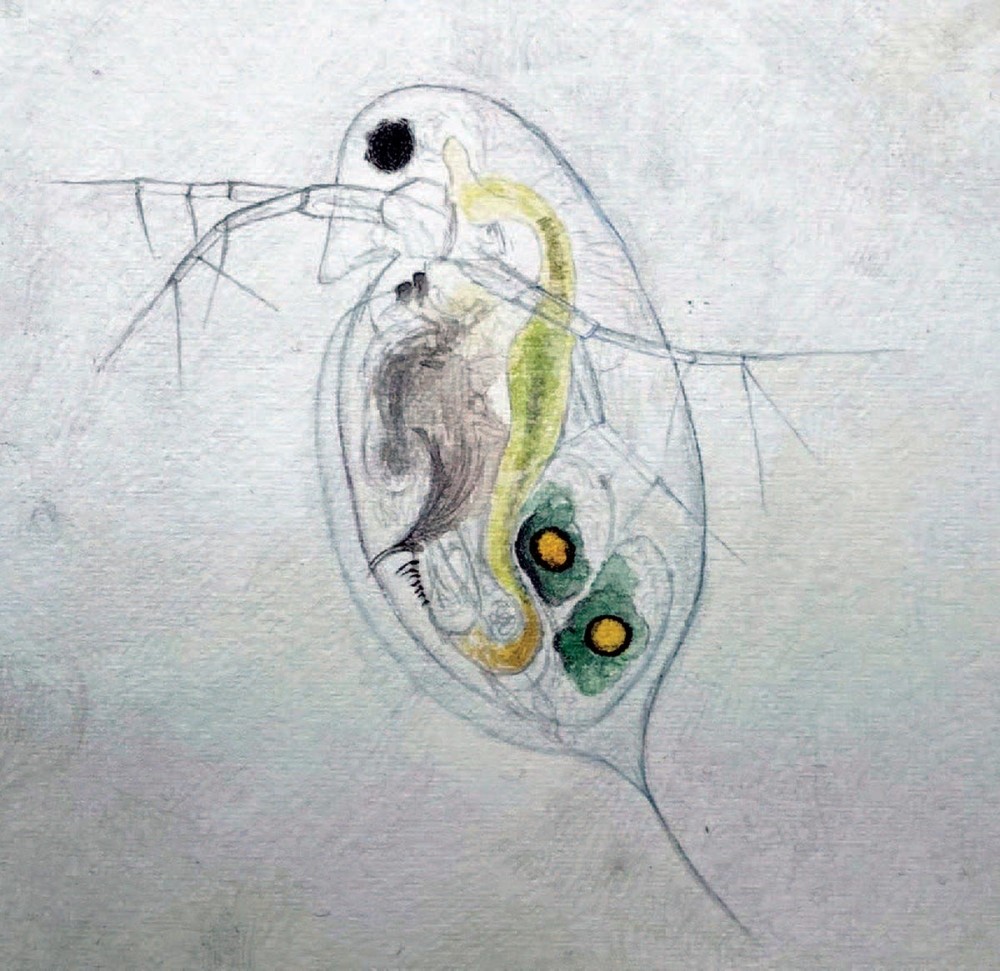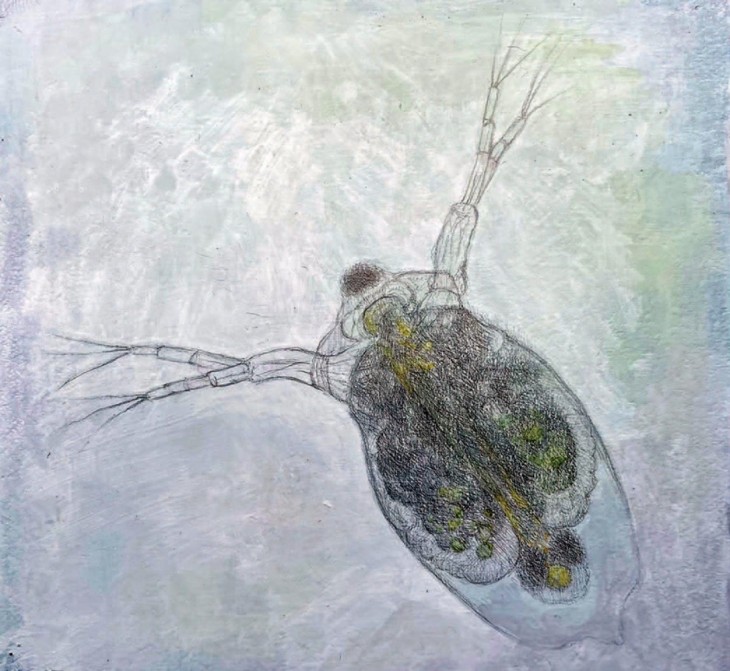Susan Sawyer is a New England naturalist who draws and paints to further her understanding of the natural world. She has taken on a lifelong project to explore and record her experience on two 3-acre glacial lakes near her home in Woodbury, Vermont.
Sawyer collects aquatic specimens by canoe. She paddles through blankets of waterlilies and trolls a plankton net behind her. After a short paddle, she docks her boat, lifts out the net, and empties her catch into a collection jar. Once home, she carefully examines what she has collected under her microscope. Here, she has recorded three tiny, translucent organisms from her water tours.
Sawyer often chooses silverpoint, a type of drawing in which an artist uses a thin piece of silver wire held in a stylus to make marks on a prepared ground. This technique was first used by medieval scribes in the creation of illuminated manuscripts and reached the height of its popularity during the Renaissance. Silver became the metal of choice because the subtle sheen of silver deposits gain character by mellowing over time. As Sawyer explains, the traces of metal eventually tarnish, and the silver color changes to a warm brown. Leonardo da Vinci, perhaps the most sensitive draftsman in all of art history, was a great fan of the silverpoint method.
Silverpoint drawings are remarkable for their fine lines, subtle shading, and sensuous surfaces. They suit Sawyer’s often translucent subject matter perfectly. For example, in the images on this page, we see through the crustaceans with no trickery – just a lightness of touch.
Sawyer recommends that novice collectors simply use a white pan to capture macroscopic specimens. “Scoop up some pond water, and as things settle, inspect them through a hand lens and marvel at the complexity and diversity of nature’s inhabitants.”




